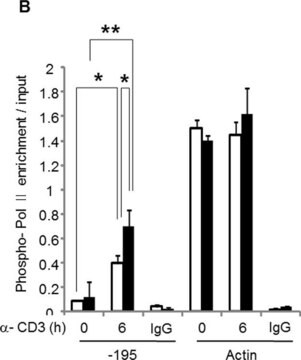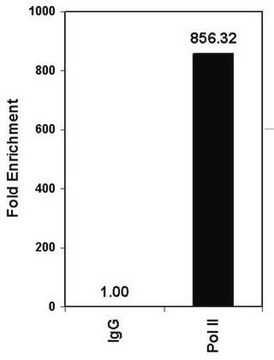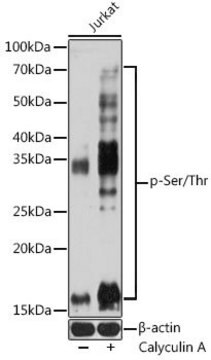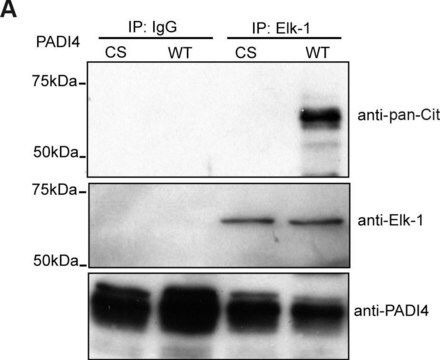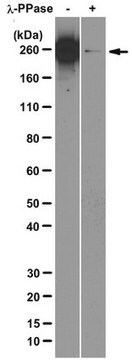SAB4200638
Monoclonal Anti−phospho−RNA polymerase II CTD (pSer5) antibody produced in rat
clone 1H4B6, purified from hybridoma cell culture
Sinónimos:
CCFDN, CTD (carboxy−terminal domain, RNA polymerase II, polypeptide A) phosphatase, CTD of POLR2A, FCP1, POLR2, POLRA, RNA polymerase II subunit A C-terminal domain phosphatase, RPB1, RPBh1, RPO2, RPOL2, RpIILS, TFIIF-associating CTD phosphatase 1, hRPB221, hsRPB1, phosphatase of, subunit 1, polymerase (RNA) II (DNA directed) polypeptide A 220kDa (POLR2A), serine phosphatase FCP1a, subunit 1CTDP1, transcription factor IIF-associating CTD phosphatase 1
About This Item
Productos recomendados
biological source
rat
Quality Level
antibody form
purified from hybridoma cell culture
antibody product type
primary antibodies
clone
1H4B6, monoclonal
mol wt
~250 kDa
species reactivity
human, rat, mouse, monkey, canine
concentration
~1 mg/mL
technique(s)
immunoblotting: 0.5-1 μg/mL using whole extracts of HeLa cells.
immunofluorescence: 4-8 μg/mL using using HeLa cells.
isotype
IgG2b
UniProt accession no.
shipped in
dry ice
storage temp.
−20°C
target post-translational modification
phosphorylation (pSer5)
Gene Information
human ... POLR2A(5430)
mouse ... Polr2a(20020)
rat ... Polr2a(363633)
General description
Specificity
Immunogen
Application
Biochem/physiol Actions
Physical form
Storage and Stability
Disclaimer
¿No encuentra el producto adecuado?
Pruebe nuestro Herramienta de selección de productos.
Storage Class
10 - Combustible liquids
wgk_germany
WGK 1
flash_point_f
Not applicable
flash_point_c
Not applicable
Elija entre una de las versiones más recientes:
Certificados de análisis (COA)
¿No ve la versión correcta?
Si necesita una versión concreta, puede buscar un certificado específico por el número de lote.
¿Ya tiene este producto?
Encuentre la documentación para los productos que ha comprado recientemente en la Biblioteca de documentos.
Nuestro equipo de científicos tiene experiencia en todas las áreas de investigación: Ciencias de la vida, Ciencia de los materiales, Síntesis química, Cromatografía, Analítica y muchas otras.
Póngase en contacto con el Servicio técnico
